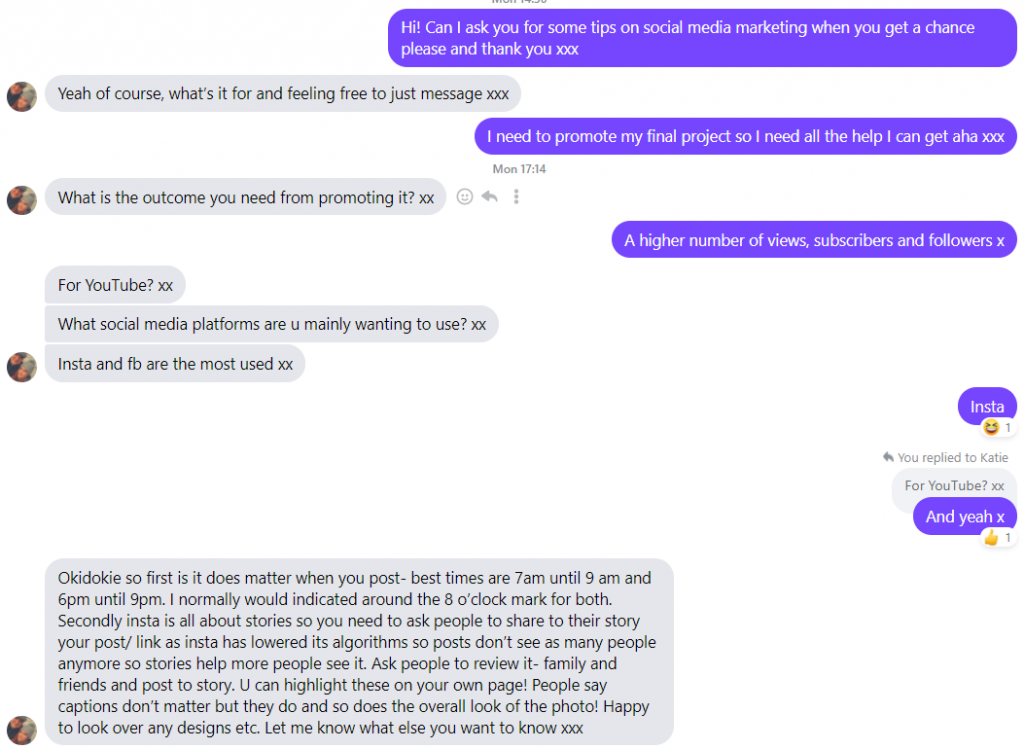What is Social Media Marketing?
Newberry and LePage (2020) say, “A social media strategy is a summary of everything you plan to do and hope to achieve on social media.” This means enabling you to carry out actions in a way that is easy to view your failure or success. The best way to do this is by having a detailed and specific marketing plan.
How is a social media strategy created?
According to Newberry and LePage (2020), there are 8 steps to take in order to create an effective social media strategy.
Step 1 is setting goals. These are important because they allow you to understand your objectives and monitor your progress. I have decided to do this by using SMART targets and a Work Breakdown Structure (WBS). SMART stands for Specific, Measurable, Attainable, Relevant and Time-Bound.
Step 2 is learning about your audience. This is an important step because without knowing this can effect the amount of engagement you receive on posts. The most important information to know about your target audience is the age range, location and interests. This is so that the posts you make are interesting and keep your fans and followers returning. This is easy to do using analytics. I will be looking at these on Instagram and YouTube to establish what our existing reach is to improve on that when I move onto making a Twitter account and Facebook page if they are necessary.
Step 3 is about knowing your competition. For me, it is clear. Our competitors are any other musicians that stream and/or create content online. However this can be used to an advantage because I can use their experience to improve on my promotion by looking into what is successful to those with similar fanbases and take those ideas on in my own way.
Step 4 is carrying out an audit. Looking at the data on our social media from previous use, we can find out what has been successful, who is engaging with us, which social networks are the most effective and how we compare to our competitors in terms of online presence. These aspects of analytics can show a promoter which areas need great improvement and can create a far more successful campaign in the long run.
Step 5 is setting up accounts or improving existing ones. After using analytics to understand what the most effective platform is, we can develop this to improve on our existing content.
Step 6 is finding inspiration. Despite uniqueness being an important trait, it doesn’t harm to take some inspiration from others. This can be done by looking into case studies or my favourite brands and other similar event types or even asking our followers. I plan to look at what other colleges have been doing and holding Instagram polls to find out what our followers think of things to include them in decisions. This will make the brand feel as inclusive and interactive as possible.
Step 7 is creating a content calendar. This means that I will need to create an upload schedule, including dates and times for various content posts. I spoke to a family member who has just passed a social media marketing exam. She gave e the advice that posting at 8am and 8pm are the most engaging times so I plan to make posts then.
Step 8 is evaluating and adjusting the marketing strategy as you go. This will enable me to make the social media accounts as interesting as possible. The easiest way to do this is by constantly checking analytics and comparing data. If I notice one post did not do as well as the others, I know that I should post less of that type of content.
Professional Advice:

In the above screenshot is a conversation between my cousin and I regarding marketing strategy. She recently passed a social media marketing exam and has studied media at GCSE and A-level. She specialises in Instagram campaigns and often posts for Dinsdales Estates Sales, Lettings and Property Management.
Her advice was simple but effective. She explained that best upload times are around 8 am and 8 pm and on further thought I realise this is because it is when the majority of people are active on their social media accounts.
Another point she made was using stories. Instagram has made it so posts are less likely to be seen. This means that getting your followers to share your posts to their stories will get more people viewing them and furthermore gain a following from that. Similarly, posting your own stories can help you post casually and can be highlighted on your page so people can watch back at any time.
Finally, she said that captions matter! Despite what others may say, a great caption can be effective for giving out information or adding context to an image. Similarly, the image you post can have a huge impact on your audience and their engagement.
Bibliography:
- Newberry, C. and LePage, E., 2020. How to Create a Social Media Strategy in 8 Easy Steps (Free Template). [online] Social Media Marketing & Management Dashboard. Available at: <https://blog.hootsuite.com/how-to-create-a-social-media-marketing-plan/> [Accessed 22 February 2021].
